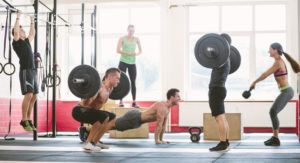 From the outside, exercises looks like exercise. You either go to the gym, or you don’t. When guys exercise, they get a big chest, bulging biceps, and a six pack that you could grate cheese on. When girls exercise, they get a tight and toned tummy, perfect peach booty, and legs for days. Right? Well, not exactly.
From the outside, exercises looks like exercise. You either go to the gym, or you don’t. When guys exercise, they get a big chest, bulging biceps, and a six pack that you could grate cheese on. When girls exercise, they get a tight and toned tummy, perfect peach booty, and legs for days. Right? Well, not exactly.
In its most bare essence, doing exercise will cause your body to change when its compared to your body doing no exercise. If you keep your calorie intake the same, but the exercise you are doing is burning more calories than what you were burning when you weren’t doing exercise, then you will lose weight. But there’s more of a science involved when you are trying to transform your current body into your dream body.
Different input elicits different results. If you’re baking a cake, you need to make sure to put in the right ingredients with the proper amounts to get the desired outcome. Well, it’s the same for exercise. Losing body fat and getting super lean requires a different recipe than putting muscle on. Training for the Tour de France is vastly different than training for Olympic gymnastics.
 There are a lot of components to manipulate when it comes to training for your goals. The amount of sets and reps that you perform can greatly change what outcome you get; changing the load (weight used) will alter the muscle fibers being activated; taking more or less rest between sets changes how much recovery time muscles get between sets and reps. And switching these up in conjunction with one another will also affect the outcome!
There are a lot of components to manipulate when it comes to training for your goals. The amount of sets and reps that you perform can greatly change what outcome you get; changing the load (weight used) will alter the muscle fibers being activated; taking more or less rest between sets changes how much recovery time muscles get between sets and reps. And switching these up in conjunction with one another will also affect the outcome!
Here’s a general guideline to follow when aiming for specific results:
For improvement in strength: More sets (4+), less reps (1-6), lots of rest (1-3 min), and heavy loads (85-100% 1RM)
For increasing muscle size: Normal amount of sets (3-5), medium level of reps (8-12), shorter rests (45-90 sec), and decently heavy loads (805 1RM)
For improvement in muscular endurance: Less sets (3), more reps (12-20), shorter rests (30-60 sec), and lighter loads (<80% 1RM)
For improving cardiovascular base: Perform cardio activities below your lactic threshold; medium to long duration (30 min – 4 hrs, depending on the activity)
For improving lactic power: High intensity exercises, medium training volume, short rests – must be hitting lactic threshold and pushing past
So many different ways to train that give different results!




How does break time change things? As an example, if I was to do the exact same workout but instead of doing 30 second breaks I took one minute breaks what would that change? What I’m getting at is is it important to keep track of how long my breaks are?
More rest just means more time to recover. For strength building programs, lots of rest is needed because you want to be able to perform each set at your maximum potential. It’s not as crucial to monitor the rest for these programs, but you just need to make sure that you take enough rest so you can perform every set. But for a hypertrophy program, the goal is to exhaust the system, so you want to keep the rest fairly minimal because you don’t want to fully recover for each set. The goal for these programs is to slowly break the muscle down by lifting relatively heavy weights multiple times in quick succession. However, in saying that, you do want to take some rest because this allows you to push your muscles to the limit of breakdown in a safe and effective manner, ie. injury-free. Overall, taking 30 sec rest compared to 60 sec rest isn’t going to change a hell of a lot. But taking 30 sec rest compared to 3 min rest will. So it is a good idea to keep an eye on your rest times, but you don’t have to have it down to the second.